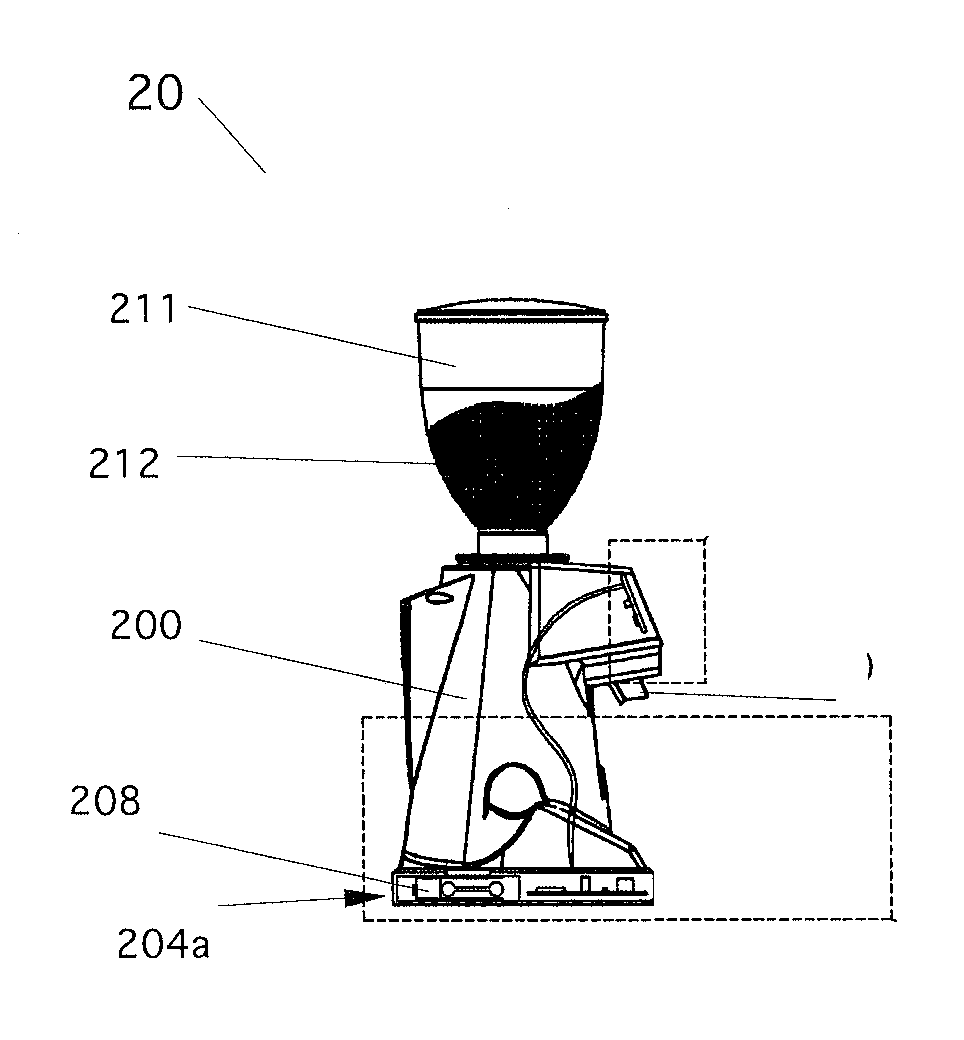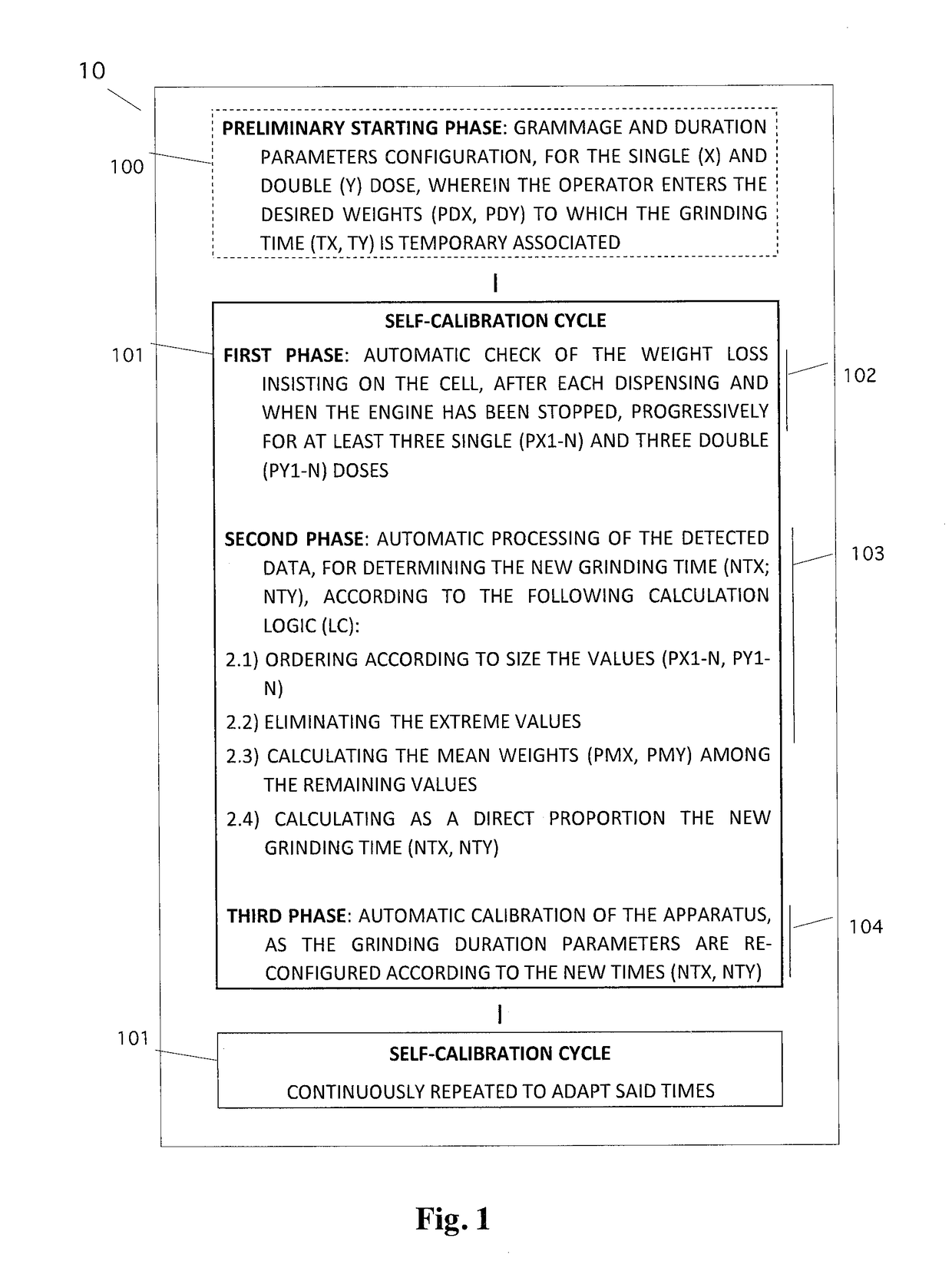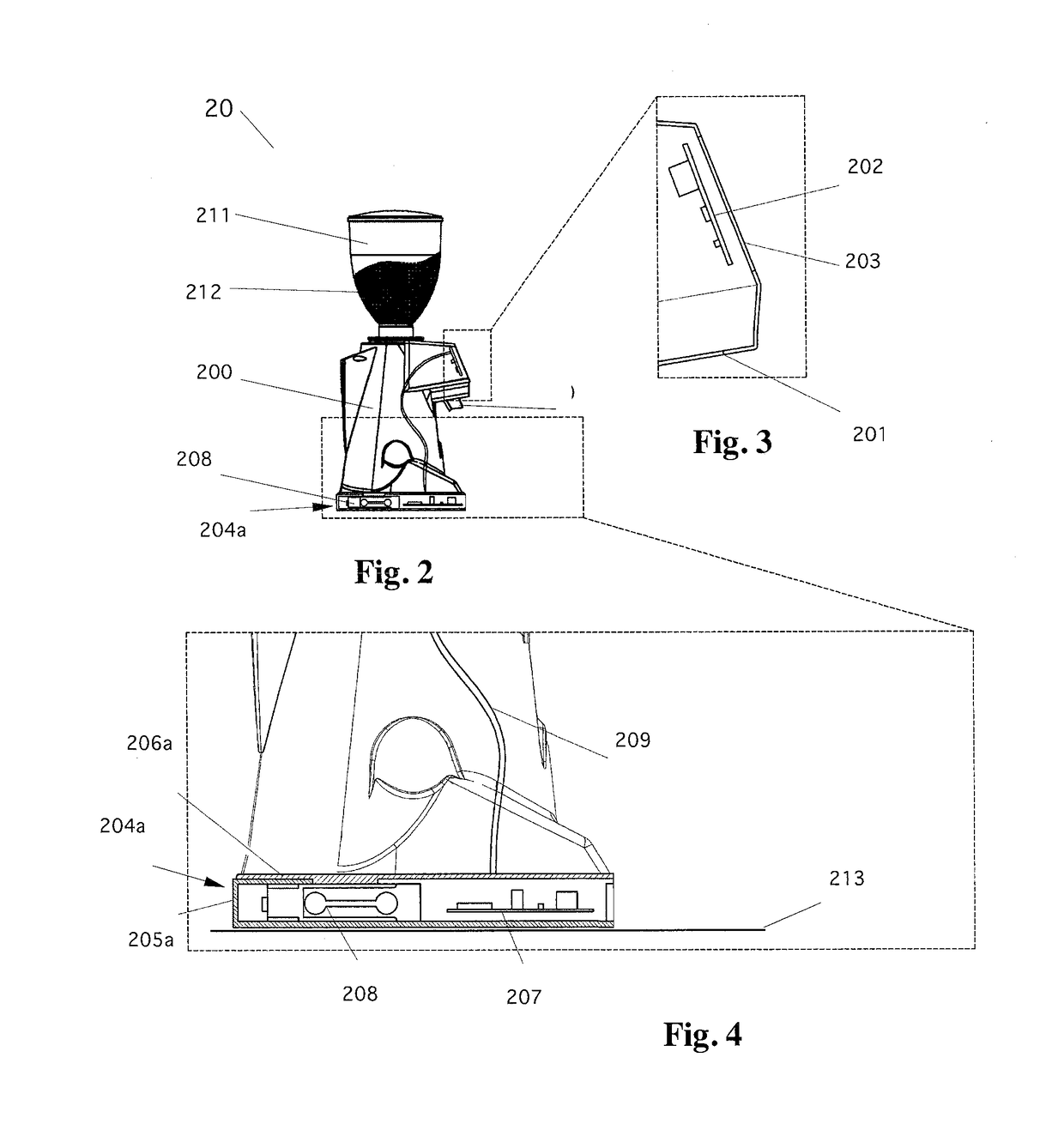Process and apparatus for grinding and dosing coffee beans with automatic and continuous dose calibration
a technology of automatic and continuous dose calibration and coffee beans, which is applied in the direction of spice mills, kitchen equipment, domestic applications, etc., can solve the problems of multiple error possibilities, slow correction of the programming of the apparatus, and ineffective solutions, so as to reduce the effect of reducing the cost of time and/or sampling
- Summary
- Abstract
- Description
- Claims
- Application Information
AI Technical Summary
Benefits of technology
Problems solved by technology
Method used
Image
Examples
example
[0065]A practical example of the application of the automatic calibration process (10), object of this invention, is reported below, wherein, after said preliminary phase (100) for starting the grinder-doser (20), a continuous series of said self-calibration cycles (101), each of which including 4 single dispensings (X1-4) and 4 double dispensings (Y1-4), for a total of 8 dispensings is expected; it has to be noted that each cycle (101) follows said three sequential phases (102-4) in an automatic way, namely it is autonomously executed by the grinder-doser (20) during the ordinary exercise, that is without interrupting the activity. After each calibration cycle (101), therefore, it happens that the following cycle (101) is executed in the same way, but with modified grinding time (TX, TY), that is with automatically calibrated duration parameters in such a way that the actually detected grammages (PX, PY) get closer as much as possible to the desired grammages (PDX, PDY), and so for...
PUM
 Login to View More
Login to View More Abstract
Description
Claims
Application Information
 Login to View More
Login to View More - R&D
- Intellectual Property
- Life Sciences
- Materials
- Tech Scout
- Unparalleled Data Quality
- Higher Quality Content
- 60% Fewer Hallucinations
Browse by: Latest US Patents, China's latest patents, Technical Efficacy Thesaurus, Application Domain, Technology Topic, Popular Technical Reports.
© 2025 PatSnap. All rights reserved.Legal|Privacy policy|Modern Slavery Act Transparency Statement|Sitemap|About US| Contact US: help@patsnap.com



